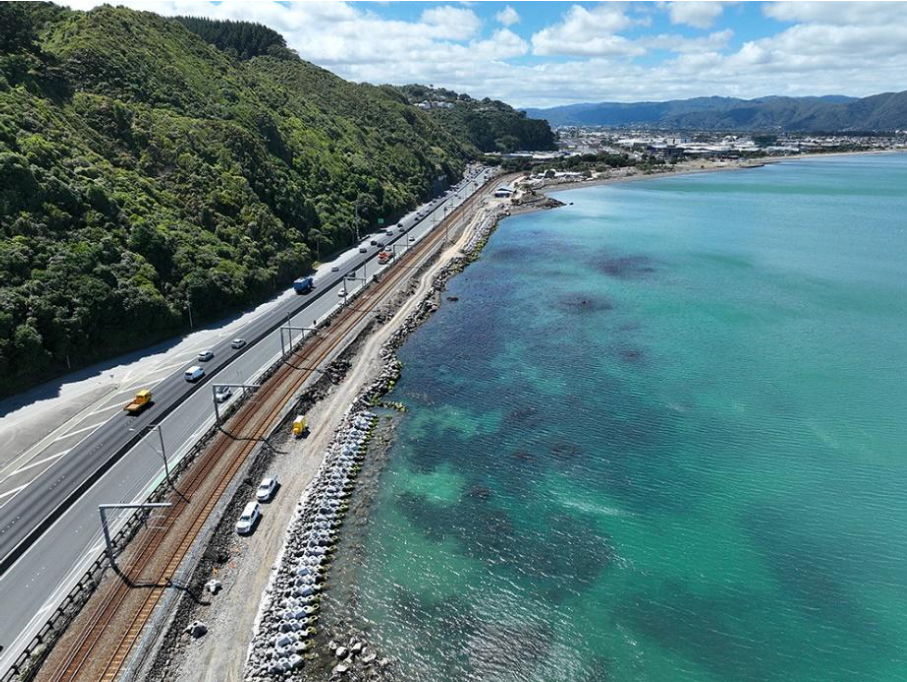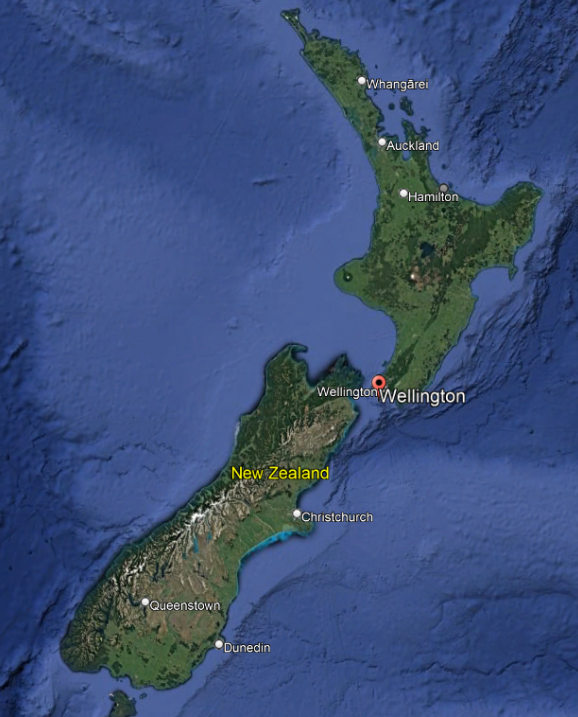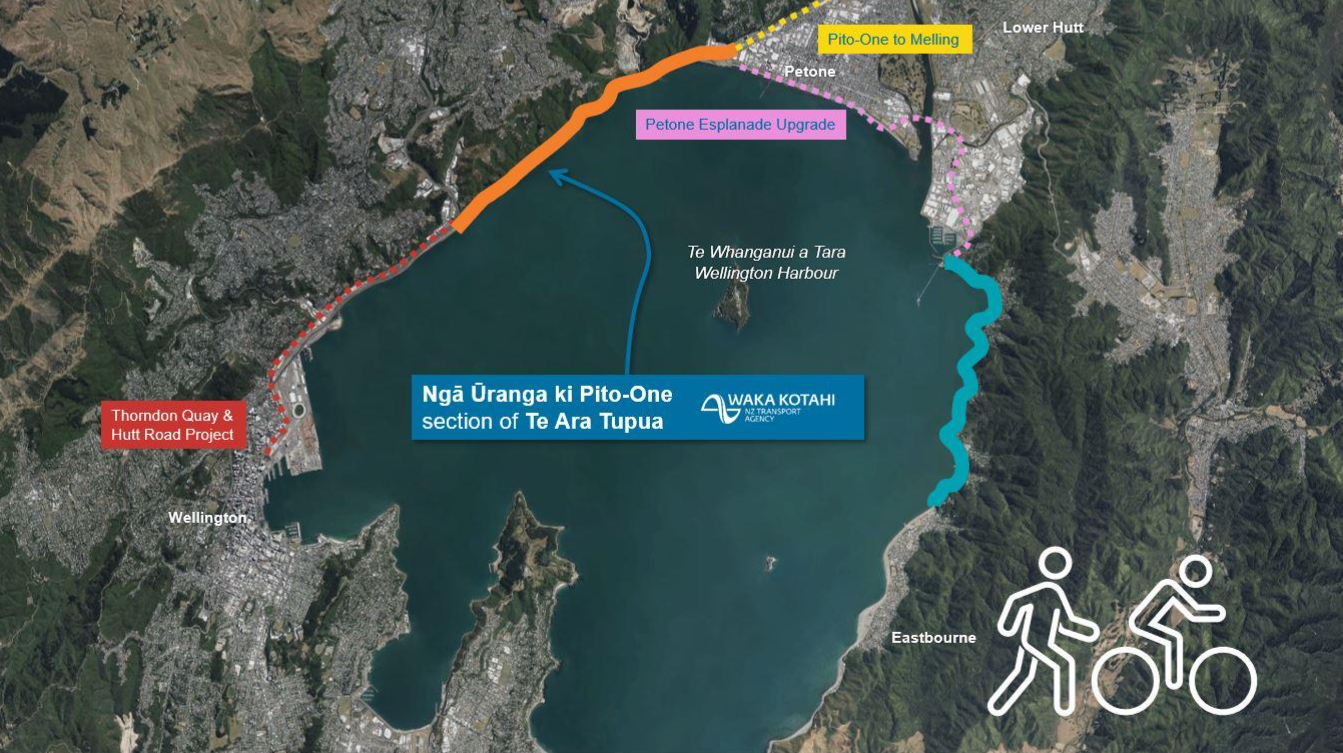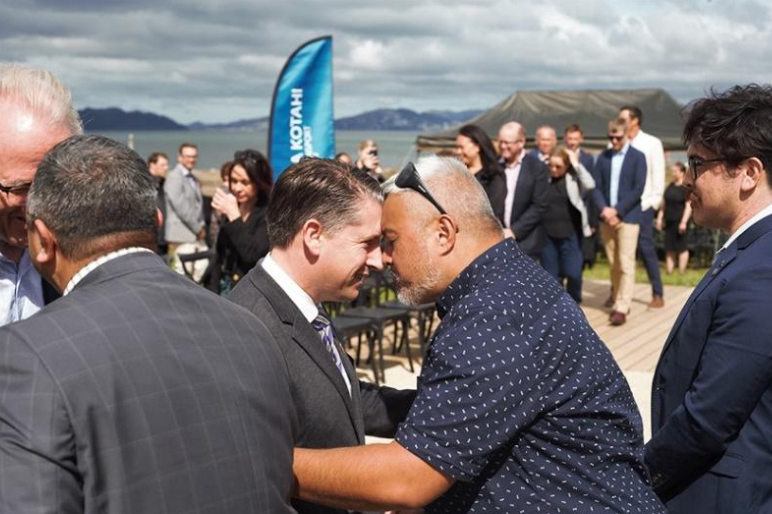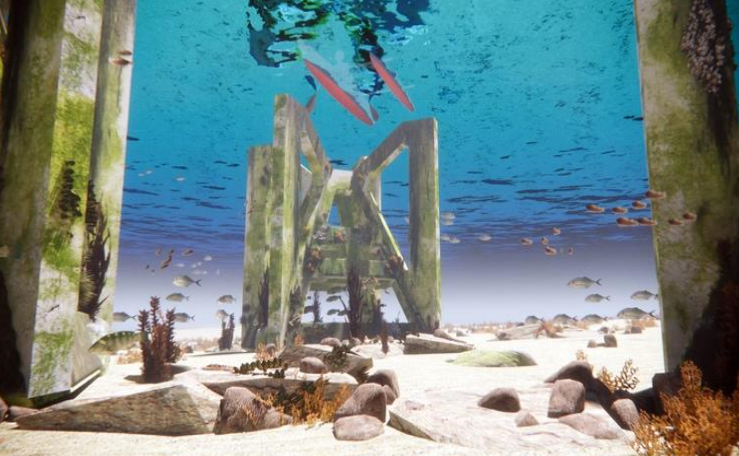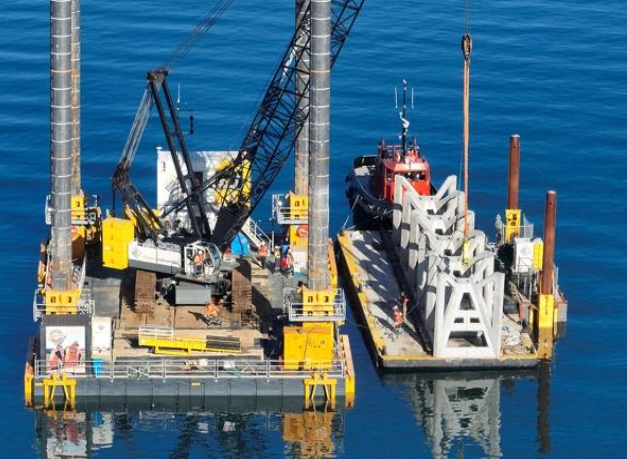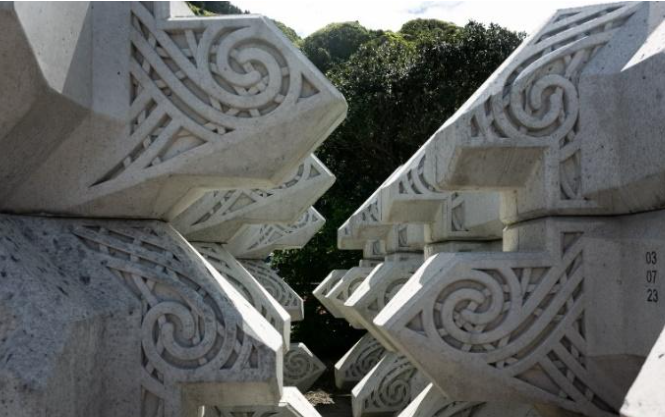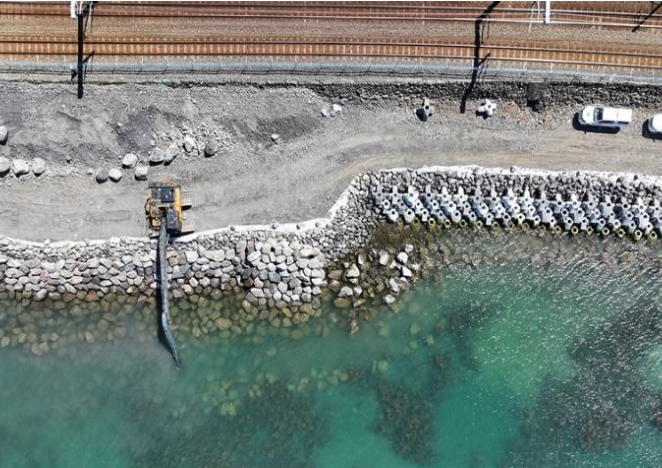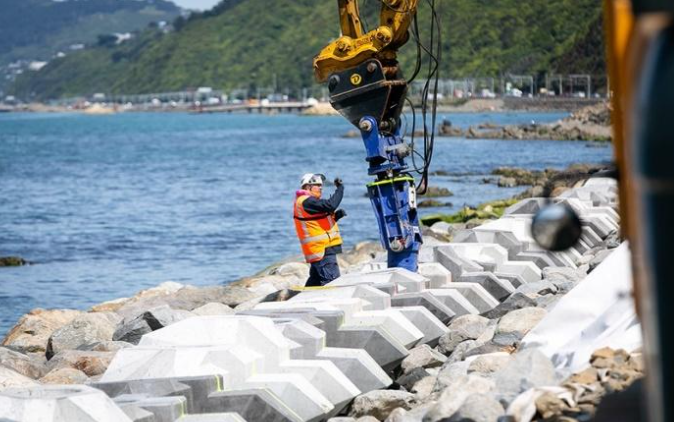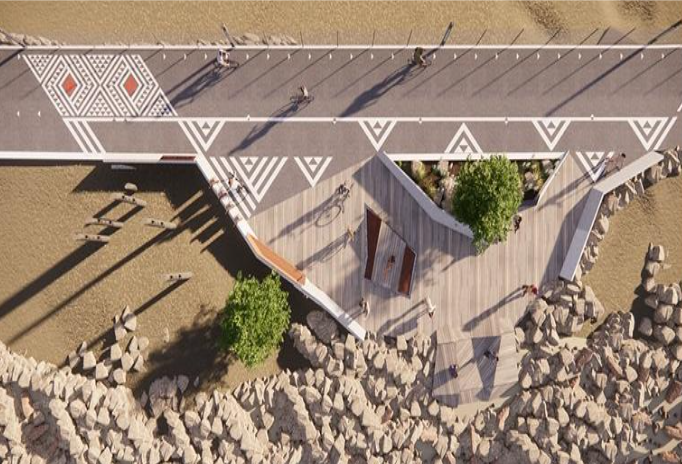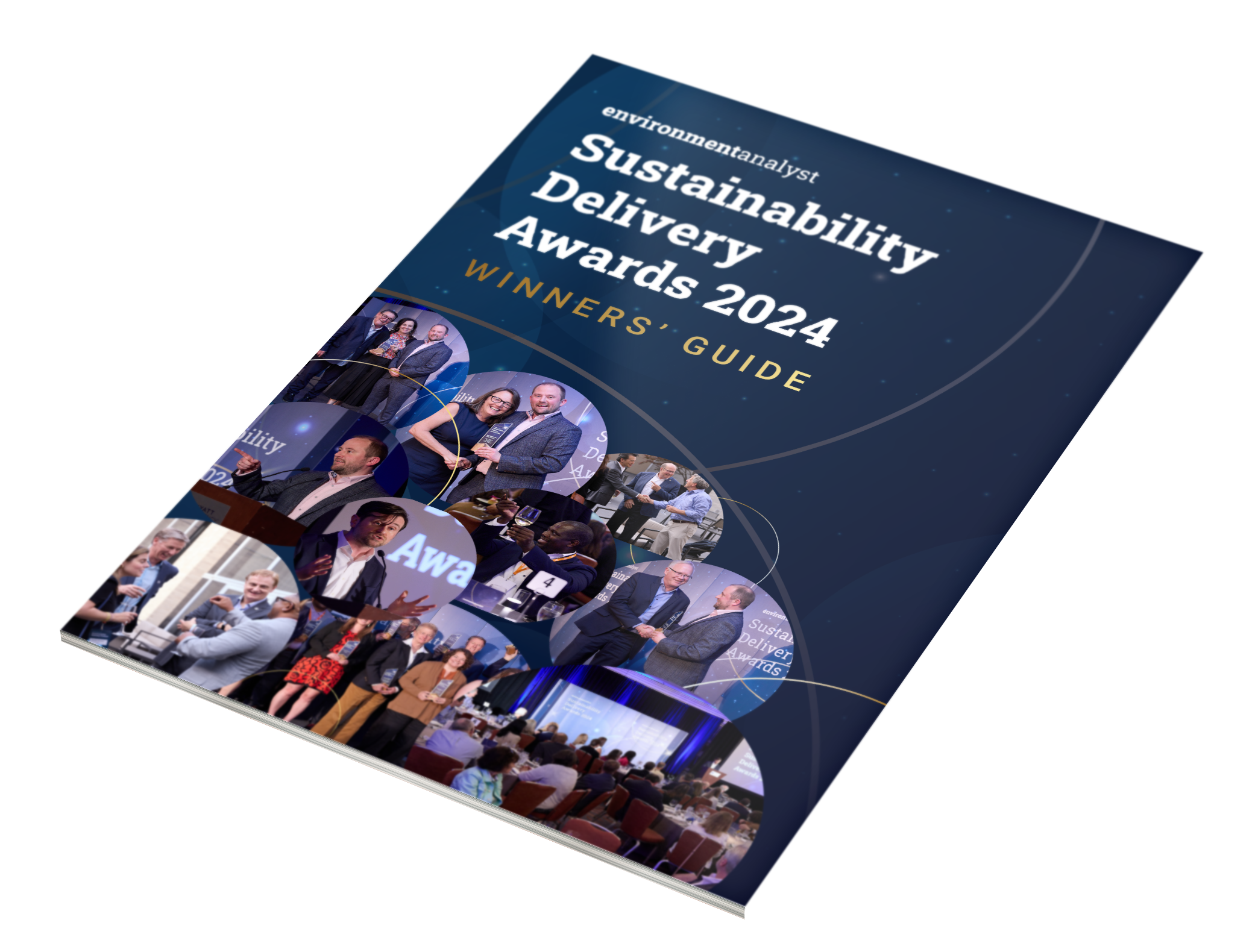Integration of ESG Objectives, and sustainability goals
At the project outset, Tonkin + Taylor and the Alliance developed a Project Sustainability Policy to embed practical measures for environmental, social, and cultural sustainability across the project and its lifecycle. Adopting the Infrastructure Sustainability Council (ISC) Rating Scheme, the project set evaluation metrics across 25 categories to evaluate the projects economic, social and environmental performance, going over and above standard practice in many areas.
With the New Zealand construction industry contributing around 10% of our country’s total emissions, we focussed on minimising construction-related greenhouse gases (GHG), with a framework for procuring resources and project materials that minimised waste, and reduced potential effects on local biodiversity. Modelling suggests that during operation, the project will achieve carbon emission reductions in the order of 750 tCO2e a year due to travellers’ mode switch to active modes.
The multi-modal nature of the project is about creating transport opportunities for the region. With a 62% increase in shared path users in the region in 2024, Te Ara Tupua provides the missing link in the region’s network to connect the two cities. By providing a high-quality shared path, Te Ara Tupua is projected to increase the number of people walking and cycling by around 1,700 journeys per day, contributing to local, national and eco-tourism, fostering recreational opportunities for residents and visitors. This shift towards active transportation options will contribute to regional carbon emission reductions, enhancing public health outcomes, while alleviating strain on other transportation modes.
The new pathway increases the protection for the rail line and state highway against storms and sea surges. Currently, the sea level is rising at about 3mm per year in the region, so the team designed future-proofing measures into the structures, in anticipation of sea levels rising by 0.54 m by 2075.
Leveraging the partnership with Taranaki Whānui and Ngāti Toa, the Alliance developed a Kaitiaki (Guardian) Strategy underpinned by a set of principles that will guide mana whenua (iwi with mana/authority over land/whenua) aspirations and expectations for Te Ara Tupua. The strategy created a foundation on which intangible impacts of the project, such as improved access could be pursued. These principles link to the connection to the environment physically and spiritually which guides our behaviours to protect and care for our environment.
Connecting Communities
The ambition to connect communities is embedded in Wellington and Hutt City’s strategies to completely reimagine how they build multi-modal transport infrastructure. It’s a case study in the speed at which New Zealand cities can change their transport priorities – with Te Ara Tupua a nationally leading project in this space.
Outcomes to connect communities, both by the physical structures as well as engagement in the projects’ philosophy includes; 24 iwi businesses engaged as suppliers to the project with a value in excess of $3 million, establishment of cadetships and scholarships for the industry, and a multi-modal schools programme for inter-generational adoption of cycling and pathways to work in infrastructure.
Effective Stakeholder Collaboration
Stakeholders have been central to the evolution of the project, as Te Ara Tupua is about creating a community asset for generations to come. Our strategic partnership with Taranaki Whānui and Ngāti Toa is central to this and goes beyond collaboration mechanisms previously applied on projects.
The project is centered on a holistic world view from Te Ao Māori which encompasses a deep respect for nature and a holistic understanding of the connection between people and the environment. Actions have been developed to bring to life key partner/Te Ao Māori concepts such as Whakapapa (genealogy), Whanaungatanga (relationships), Manaakitanga (hospitality), te Reo Māori (language), Kaitiakitanga (guardianship), Tikanga Māori (protocols, customs) and Mātauranga Māori (knowledge system). These actions include (but are not limited to) cultural graphics, tāonga (carved sculptures), embedding language development and practices for language revitalisation for the entire project team, a cultural monitors scheme, and empowerment of iwi through a reef research project providing career pathways to uplift iwi for generations to come.
A Mana Whenua Outcomes and Benefits Realisation Plan was co-developed with iwi to commit to a partnership and realise wider benefits other than the cycleway. This is a live document that is reviewed annually to ensure benefits are considered regularly and allow responding to the progression of iwi wellbeing goals.
"For Taranaki Whānui, this project is about setting a strong foundation and high standards for a long-term partnership that will create community infrastructure which speaks directly about our stories of identity and our values as iwi mana whenua." - Kim Skelton, Mana Whenua Steering Group chairperson.



